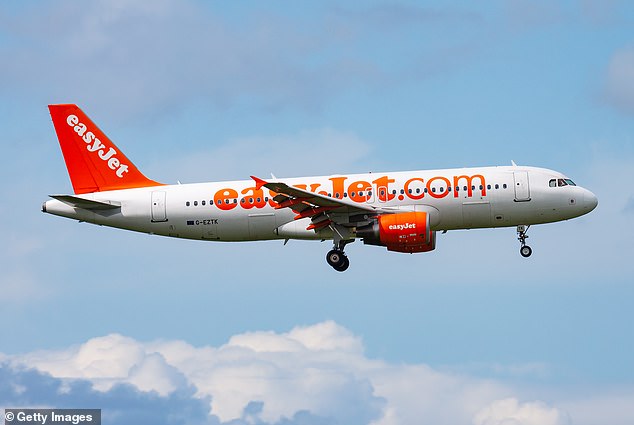At least two injured in turbulence on easyJet flight from Corfu to London, with Airbus A320 carrying 181 passengers forced to make emergency landing in Italy

At least two people were injured on an EasyJet flight from Corfu to London after severe turbulence struck the flight, forcing the pilots to make an emergency landing.
The British airline’s Airbus A320 departed from Corfu airport in Greece at 12:44 local time on Monday and was en route to London Gatwick with 181 passengers and crew on board.
But after just 20 minutes of flying, the easyJet plane was hit by turbulence while flying at 780 km/h at an altitude of 8,500 metres.
Two cabin crew members, who were preparing food for passengers, were thrown against the sides of the plane, injuring them so badly that the pilots decided to make an emergency landing at Rome’s Fiumicino airport.
The shocking incident came as southern Italy was battered by bad weather and occurred just hours after the Bayesian superyacht capsized and sank off the coast of Sicily after being crushed by a deadly waterspout.

At least two people were injured on an easyJet flight from Corfu to London
Flight tracking data showed the plane deviating from its flight path and landing at an airport near Rome
Passengers were greeted upon landing in Rome by easyJet crew and airport staff, who provided immediate assistance.
The injured flight attendants received immediate medical attention, while a replacement crew and aircraft were arranged so passengers could continue their flight to London Gatwick on Monday afternoon.
The aircraft involved in the incident remained parked in Rome for security checks the day after the incident.
An easyJet spokeswoman confirmed the incident in a statement, saying: ‘On 19 August, there was turbulence during the flight which unfortunately resulted in two cabin crew being injured.
‘The captain therefore decided to divert the flight to Rome, where the cabin crew received medical assistance.
‘The safety and wellbeing of our customers and crew is easyJet’s highest priority. Our pilots are trained to deal with turbulence.’
Meanwhile, Italy’s aviation authority ANSV announced that it had opened an investigation into the incident to determine whether the turbulence was a sudden and unforeseen event (also known as “clear air turbulence”) or whether it was visible on the plane’s weather radar but underestimated by the pilots.
“Given the type and severity of the reported injuries, we have initiated a safety investigation and classified the incident as an ‘accident,’” the ANSV said in a press release.
The agency added that investigators also need to determine why the pilots chose to divert to Rome instead of the nearest airports of Bari or Brindisi.
Their investigation takes place this week as specialist search and rescue diving teams continue to survey the sunken Bayesian superyacht in a desperate attempt to locate six missing people, including British tech magnate Mike Lynch, who are believed to have been trapped on board when the yacht sank earlier this week.
The £30million vessel sank minutes after being hit by a freak waterspout while anchored off Porticello in Sicily just before 5am on Monday.


Searchers head to the site of the sinking of the Bayesian this morning as the operation to find those still missing enters its third day

Rescue workers and divers from the Italian fire brigade work through the night as the rescue operation for the missing people on board continues

A handout photo provided by the Perini Navi Press Office on August 19, 2024 shows the ‘Bayesian’ sailboat
Fifteen people were rescued after the disaster, but six people are still missing, including billionaire Lynch, his 18-year-old daughter Hannah and a Morgan Stanley executive.
The search for the missing persons entered its third day this morning, with divers still trying to reach the huts in the hope of finding them.
According to an engineer, the missing passengers could still be alive in air pockets 50 meters below the surface. This means that divers, who can only stay underwater for ten minutes per dive due to the depth of the wreck, are in a race against time.
Their work was complicated by the difficulty of getting on board. Divers had to force their way through a 3cm thick porthole to gain access to a section and other parts of the wreck that were blocked by furniture.
The official investigation into the tragedy, launched by prosecutors in nearby Termini Imerese, will initially focus on whether the yacht’s crew closed the access hatches to the ship before the storm hit, according to an expert on the ground.
Investigators will look into whether appropriate measures were taken given the forecast for bad weather overnight, and whether any of the crew members are criminally liable.




